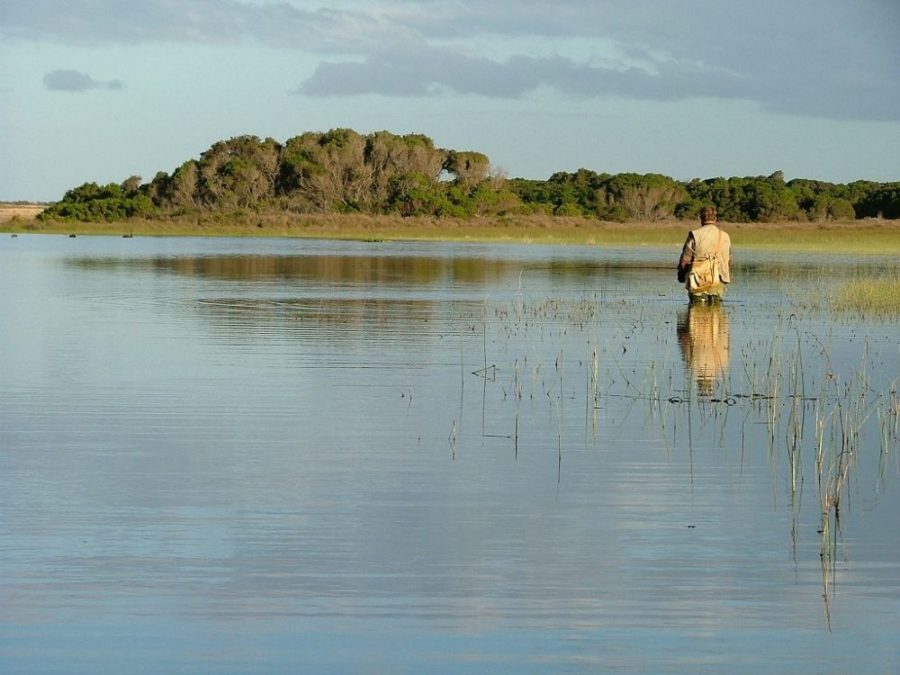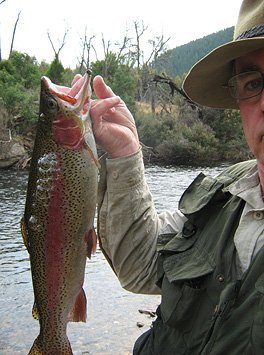On this day: Trout arrive in Australia

IN APRIL 1864, THE Norfolk sailed from England and docked at the Railway Pier in Melbourne, carrying an unsuspected cargo: 2700 live brown trout ova packed inside 30 tonnes of ice. Two previous attempts to transport live fish eggs had failed. Aboard was Sir James Arndell Youl – a pastoralist whose vision to bring trout to Australia would shape the country’s fishing industry for generations to come.
Then, on 4 May, the first of the brown trout eggs hatched in the Plenty River in Tasmania. These baby trout became the primary stock for the waters of Australia and New Zealand.
“The brown trout is considered by fishers to be the aristocrat in freshwater fishing and is the most sought after in many countries throughout the world,” says Terry George, President of the Australian Trout Foundation.
Rainbow trout was the second of the trout species to arrive in Australia, originating from the rivers and lakes of North America and brought to New South Wales from New Zealand in 1894.

‘Trout’ is the common name for a few species of freshwater fish belonging to the Salmoninae subfamily of the family Salmonidae. This rainbow trout was caught in Tasmania. (Image: Fly fisherman/Wikimedia)
Like many introduced species to Australia, brown trout ova were brought over from England to make Australia feel more like home for new settlers. At the time, James Youl was most likely unaware of how significant his contribution would be. More than 3 million trout were released last year into lakes and rivers by the various state fisheries, according to Terry.
Ask any avid angler, and the introduction of trout has created many positive economic and social opportunities in Australia. Yet according to fish ecologists, their adaptation has disrupted the delicate balance of Australia’s ecosystem by harming native species.
“The ‘trout experiment’ as an introduced species must be considered in the social and political context of [the 1860s], where there was almost zero consideration for the environment,” Terry says. The Australian Trout Foundation, in collaboration with several other conservation departments, is working to restore sustainability of the streams to avoid the errors of the past.
The ideal environment for trout
Since their introduction, brown and rainbow trout have successfully and pervasively adapted to Australian waterways, thriving in the cold, fresh waters of Tasmania, Victoria, NSW and WA.
“Trout are a cold water fish and the perfect water temperature for them to flourish is 14°C,” says Terry. The cold Tasmanian streams and lakes in the central highlands are perfect for trout, and nowadays, they are the main targeted freshwater fish sought after by anglers in the region.
Victoria and New South Wales are also popular trout fishing regions. Trout live in the high country streams of Victoria, or the rivers and lakes of the Snowy Mountains in New South Wales, such as the Thredbo River, Lake Eucumbene, the Upper Murrumbidgee River and Lake Jindabyne.
“Our Snowy Mountain streams are virtually built for trout,” says Col Sinclair, a lifelong trout expert and fishing guide in Adaminaby, NSW. “Trout belong where they are. They have lived here for longer than most of us have, so they have probably earned their right to be Australian citizens.”
Enthusiasts like Col believe Australia has reaped trout’s many benefits. The sport enriches the outdoor experience for skilled anglers and amateur fisherman alike, and it has created a lifestyle and pastime for generations of trout fishers. Additionally, small communities surrounding trout-stocked waters rely on fishing tourism.
“I don’t believe Adaminaby would be here right now if it wasn’t for the trout in Lake Eucumbene or the Eucumbene River,” says Col. “We wouldn’t exist without anglers coming here on a weekly basis to fish and enjoy the outdoors of this area.”
A threat to the natives
However, ecologists believe trout are harmful to native species of fish and frogs. Trout, particularly brown trout, are predators known to eat small native fish, such as the barred galaxias and mountain galaxias.
“There is definitely evidence that trout are causing major damage in particular streams and reservoirs,” says Dr Brendan Ebner, a fish ecologist at TropWATER, James Cook University, Queensland. “The various upland galaxias species are especially vulnerable to trout because they are small and easily eaten by trout. The original Pedder galaxias population has been wiped out from its natural range in Tasmania providing a classic example, and the only way the species still exists is because it has been moved to another lake where trout are absent.”
While trout’s harm is well-documented, the extent of harm that trout are doing to the overall native population of fish is a more complex question to answer. Trout’s interaction with native species is dependent on the environment of each different lake and stream they live in, says Brendan.
“To simplify it and say that trout don’t cause any problems is obviously incorrect, and to say trout have destroyed all native fish is incorrect. The truth lies somewhere in the middle depending on each locality,” Brendan says.
According to Terry, other reasons should be considered that may cause the decline of the native fish, including the role of wildfires, pesticides, irresponsible clearing of waterways and land, other predatory fish, and the environmental vandals like European Carp. Terry also points to locations where trout and native fish have managed to co-exist – for example, the strongest population of the endangered Macquarie Perch, he says, lives alongside “an excellent brown and rainbow trout fishery” in Lake Dartmouth, Victoria.
The Australian Trout Foundation, Native Fish Australia, Fisheries Victoria, Department of Environment, Land, Water & Planning and Catchment Management Authorities are in partnership to build barriers to separate vulnerable and predatory species and manage the ongoing sustainability of trout fishing, says Terry.
“Scientists and fishing organisations in all states are collaborating to ensure the riparian [river] environment and waterways’ biomass are being studied comprehensively, and where required, improved to provide sustainable native and trout fisheries for future generations,” Terry says.
Two divided camps
However, the future of the trout fisheries is still up for debate.
While 4 May 1864 is a controversial day to ecologists, anglers have certainly marked the arrival of trout eggs in Australia as a celebrated moment in history. In New South Wales alone, there are more than one million anglers, and the inland recreation fishing industry is valued at around $2 billion.
“It’s probably one of the few species that does eat well, yet we still release,” adds Col. “Most of us believe trout themselves are just too valuable to be knocked on the head and put on a plate.”
The social and economic impact that trout have made is evident. “Many regional economies derive substantial benefits from local and visiting trout anglers,” says Terry. For these anglers, trout fishing is a lifestyle.
Good, bad or indifferent, trout are here to stay. The question is the direction we move forward with the information that is available.
“With two divided camps, we are never going to move anywhere,” says Brendan. “My professional and personal view is that we should be managing this in a more balanced way, whereby we have streams where we work to eradicate invasive species and maximise native biodiversity value, and then in a subset of streams or reservoirs we promote and facilitate fisheries that at least in the short term support some non-native species that we measure and monitor overtime.”
Brendan also adds that we should “consider premier native fish angling in the wider debate regarding society, fisheries and native biodiversity in streams involving trout”.
The future of trout is a balancing act to protect the threatened native species, and also to preserve an enormous economic industry and celebrated pastime that anglers have enjoyed since 1864.

